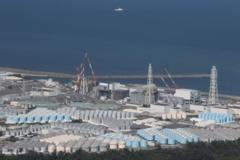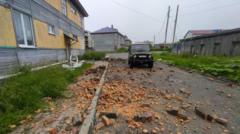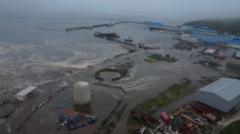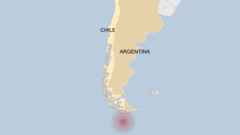**Workers at Japan's Fukushima nuclear facility were evacuated as tsunami warnings were issued after a significant earthquake struck off Russia's coast.**
**Workers Evacuated from Fukushima Nuclear Plant After Tsunami Alert**

**Workers Evacuated from Fukushima Nuclear Plant After Tsunami Alert**
**Tsunami warnings prompt evacuation of Fukushima plant workers amid concerns of another disaster.**
Workers at Japan's troubled Fukushima nuclear plant were ordered to evacuate earlier today following tsunami warnings issued after an 8.7 magnitude earthquake rattled the area off Russia’s far eastern coast. The plant's operator, Tokyo Electric Power Company (Tepco), confirmed that all 4,000 employees were evacuated but reported no abnormalities detected within the facility.
This alert comes as a stark reminder for many residents of Fukushima prefecture, rekindling memories of the triple disaster that struck in March 2011, resulting in over 18,000 fatalities. The catastrophic 9.0 magnitude earthquake and ensuing tsunami led to the flooding of the nuclear plant. The deluge disabled its emergency generators, resulting in overheating and a nuclear meltdown, leaving behind hundreds of tons of hazardous material.
On March 11, 2011, at precisely 14:46 local time, the Great East Japan Earthquake struck near Sendai, just 97 kilometers from the power plant. The ensuing tsunami severely compromised the cooling systems, causing damage that allowed radioactive material to leak into the atmosphere and Pacific Ocean. Following the disaster, the government established a 30km exclusion zone and evacuated over 150,000 residents due to radiation risks—many of whom are still unable to return to their homes today.
The task of cleaning up the nuclear waste at Fukushima is monumental. Currently, a staggering 880 metric tons of hazardous material remains within the plant. Removing this debris is considered the biggest obstacle to the plant's safe decommissioning. Tepco stated that full-scale removal efforts for the melted fuel debris have been shifted to 2037 at the earliest, a significant delay that jeopardizes the government's plan for complete decommissioning by 2051. Experts are skeptical about achieving these timelines, arguing that maintaining unrealistic targets complicates the recovery efforts.
Another pressing concern is the management of contaminated water. Tepco has been injecting water to cool the reactor fuel rods since the disaster, leading to an accumulation of radioactive water stored in over a thousand tanks—sufficient to fill more than 500 Olympic swimming pools. The situation escalated when Japan began releasing some treated wastewater into the ocean this year, sparking widespread criticism despite assurances from UN atomic regulators regarding its negligible environmental impact.
In response to energy demands, Japan has started to pivot back to nuclear power after initially moving away from it post-Fukushima. The government has indicated plans to "maximize" nuclear energy. Amid this shift, Kansai Electric Power is contemplating the revival of reactor construction projects, previously on hold due to the Fukushima disaster. The recent tsunami warning will undoubtedly amplify local opposition to these endeavors.
The Japan Meteorological Agency has reported that tsunami waves have reached various coastal areas, including Fukushima, with some locations experiencing waves as high as three meters (approximately nine feet). Thousands of residents have been urged to evacuate for their safety as the threat of more seismic activity looms.
Japan's geographical position on the Ring of Fire exposes it to roughly 1,500 earthquakes annually, raising ongoing concerns regarding potential devastating quakes in the future. Building resilience against seismic events, the country has established extensive earthquake preparedness measures, yet fears persist among its population, particularly regarding the possibility of a catastrophic quake along the Nankai trough within the next three decades.




















